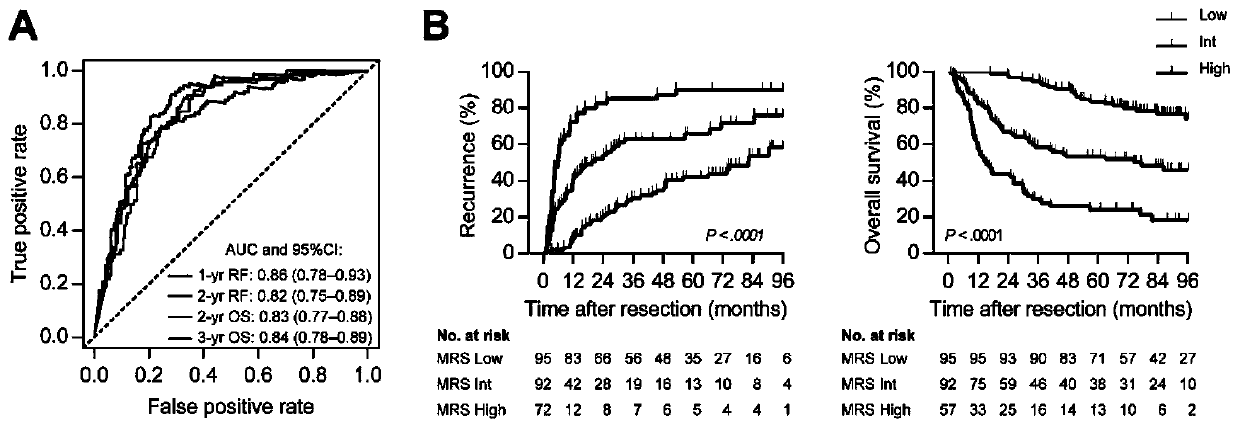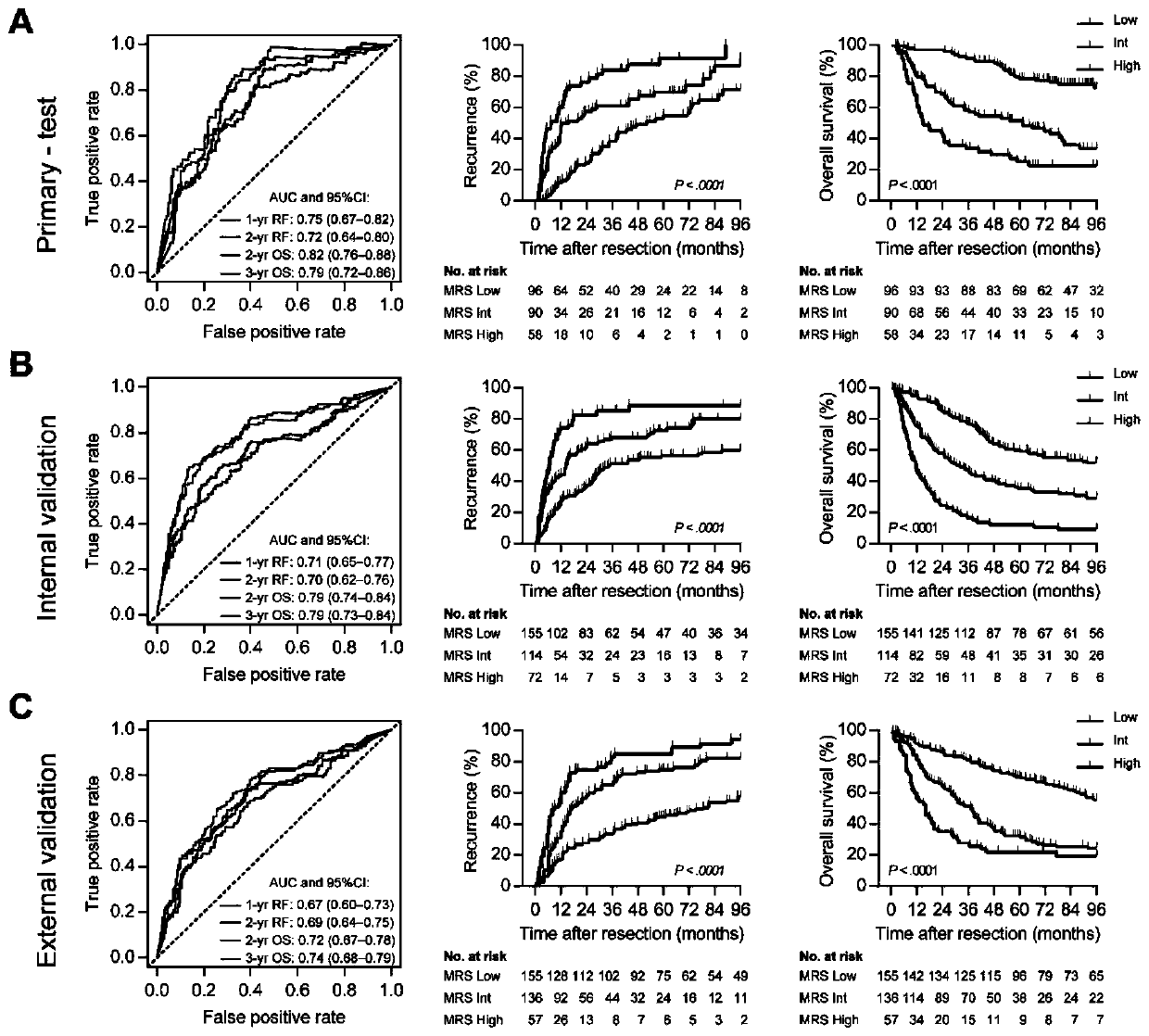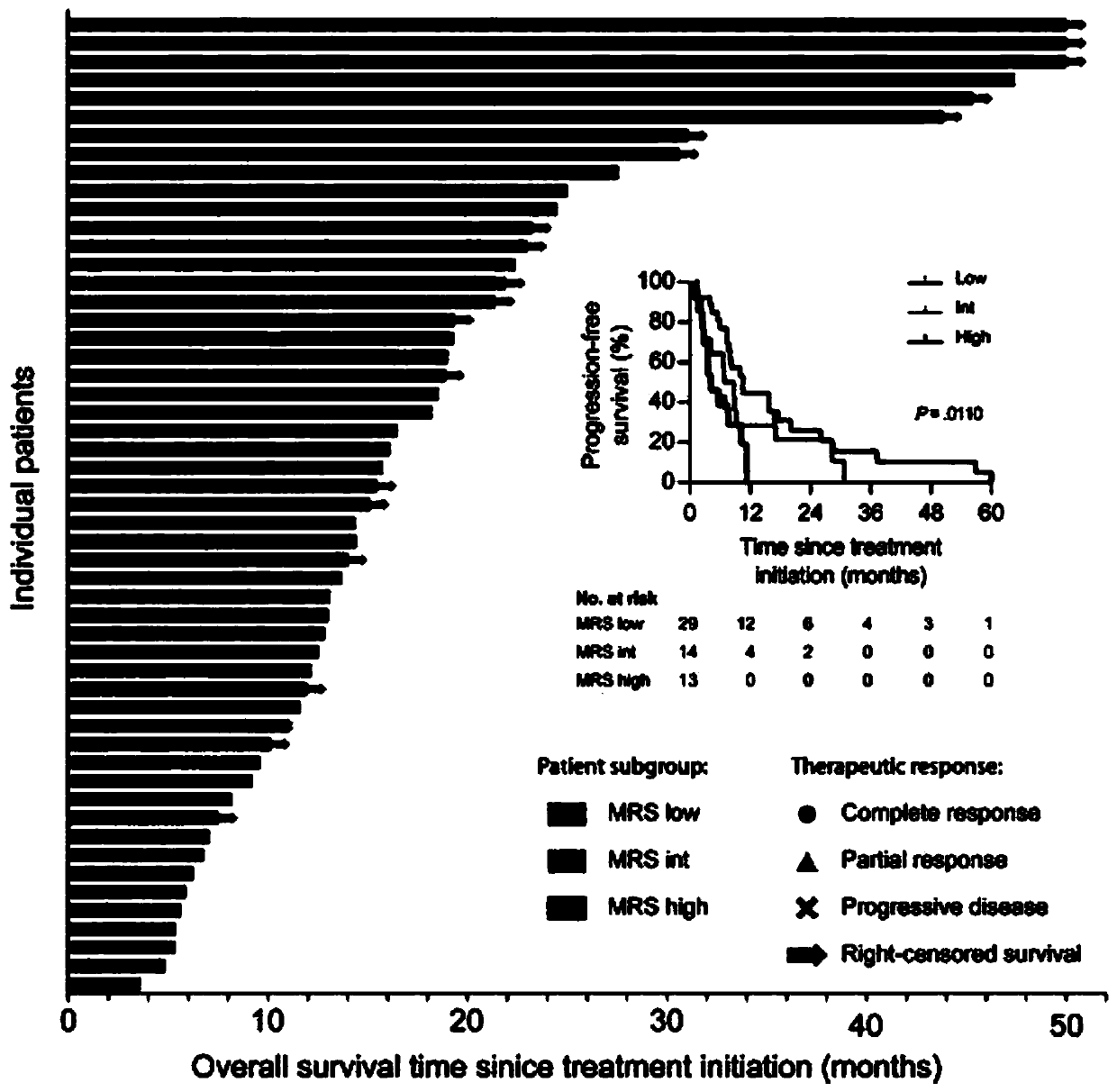Marker for prognosis prediction of liver cancer based on CD11b and CD169 protein molecules
A technology for CD169 and protein molecules, which is applied in measuring devices, analytical materials, biomaterial analysis, etc., can solve the problems of ignoring the important influence of myeloid cells, high detection cost, and poor accuracy, and achieve simple and convenient detection methods with high clinical Application value, high sensitivity effect
- Summary
- Abstract
- Description
- Claims
- Application Information
AI Technical Summary
Problems solved by technology
Method used
Image
Examples
Embodiment 1
[0050] Example 1 Calculation of Myeloid Response Score (hereinafter referred to as MRS)
[0051] The present invention selects two protein molecular markers (CD11b and CD169) of myeloid immune cells. Among them, CD11b is used to mark CD11b + Myeloid cells (mainly CD11b + granulocytes, monocytes, myeloid-derived suppressor cells, etc.); CD169 for labeling CD169 + Myeloid cells (mainly CD169 + monocytes / macrophages).
[0052] 1. Immunohistochemical staining
[0053] The specific dyeing process is as follows:
[0054] (1) Select liver cancer tissue wax blocks to ensure that there is enough cancer nest area for statistics and no large tissue necrosis;
[0055] (2) Obtain a 4 μm paraffin section, bake it at 60°C for 2 hours, take it out, and cool it slightly;
[0056] (3) Dewaxing with xylene twice at room temperature, 10 minutes each time;
[0057] (4) Wash away the xylene in 100% ethanol, and then pass through 95% alcohol, 80% alcohol, and 70% alcohol successively, each t...
Embodiment 2
[0088] Example 2 Myeloid Response Score MRS can be used as the basis for grouping patients with liver cancer
[0089] 1. MRS as the basis for grouping patients in the initial sample set-training subset
[0090] 1. Selection of initial sample set-training subset samples
[0091] The primary cohort consisted of 488 paraffin-archived specimens from patients with liver cancer who underwent tumor resection for the first time at Sun Yat-sen University Cancer Hospital from January 2006 to December 2008, including liver cancer tumor tissues and matched distant paracancerous tissues. Normal tissue (more than 2cm away from the tumor area). The batch of patients was randomly divided into two groups, namely 244 cases of training set (primary-training cohort) and 244 cases of verification set (primary-test cohort), for subsequent model construction. All the above selected patients were not co-infected with syphilis, HIV virus or suffering from autoimmune diseases. None of the patients r...
Embodiment 3
[0112] Example 3 MRS predicts the curative effect of sorafenib treatment after relapse in patients
[0113] 1. Experimental method
[0114] In a cohort of 56 patients who had previously undergone radical resection of liver cancer and received sorafenib 800 mg daily after recurrence diagnosis, recurrence occurred 0.8 to 121.4 months after tumor resection (interquartile range, 4.9 to 30.1 months) , Sorafenib treatment time ranged from 1.7 to 60.8 months (interquartile range, 6.3 to 21.4 months).
[0115] After using the same standard to group patients according to MRS value (low MRS: 0≤MRS≤37.9; medium MRS: 37.9<MRS≤60.6; high MRS: 60.6<MRS≤100), the patients were divided according to their overall survival after treatment. Sort and mark the curative effect evaluation at each time point.
[0116] 2. Experimental results
[0117] Compared with the other two groups, HCC patients in the MRS-low group tended to obtain longer post-treatment survival and had the best response to so...
PUM
 Login to View More
Login to View More Abstract
Description
Claims
Application Information
 Login to View More
Login to View More - R&D
- Intellectual Property
- Life Sciences
- Materials
- Tech Scout
- Unparalleled Data Quality
- Higher Quality Content
- 60% Fewer Hallucinations
Browse by: Latest US Patents, China's latest patents, Technical Efficacy Thesaurus, Application Domain, Technology Topic, Popular Technical Reports.
© 2025 PatSnap. All rights reserved.Legal|Privacy policy|Modern Slavery Act Transparency Statement|Sitemap|About US| Contact US: help@patsnap.com



